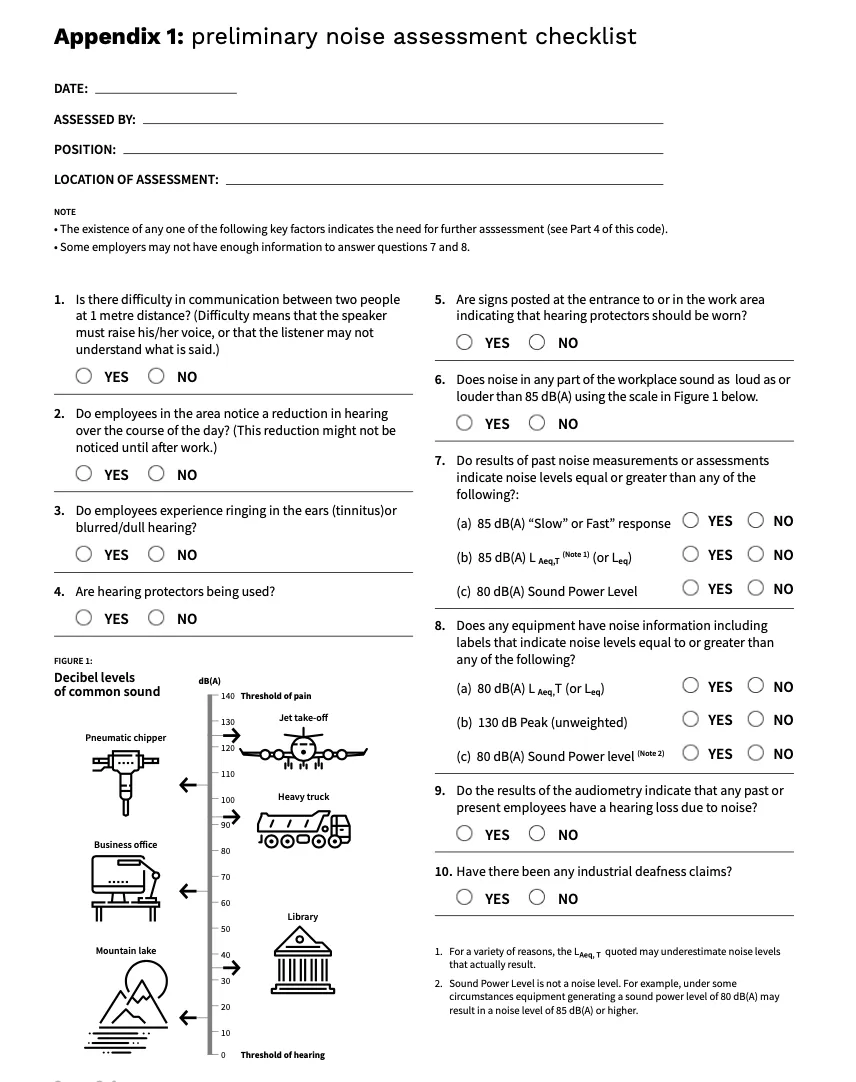Noise Management
Whakahaere Turituri
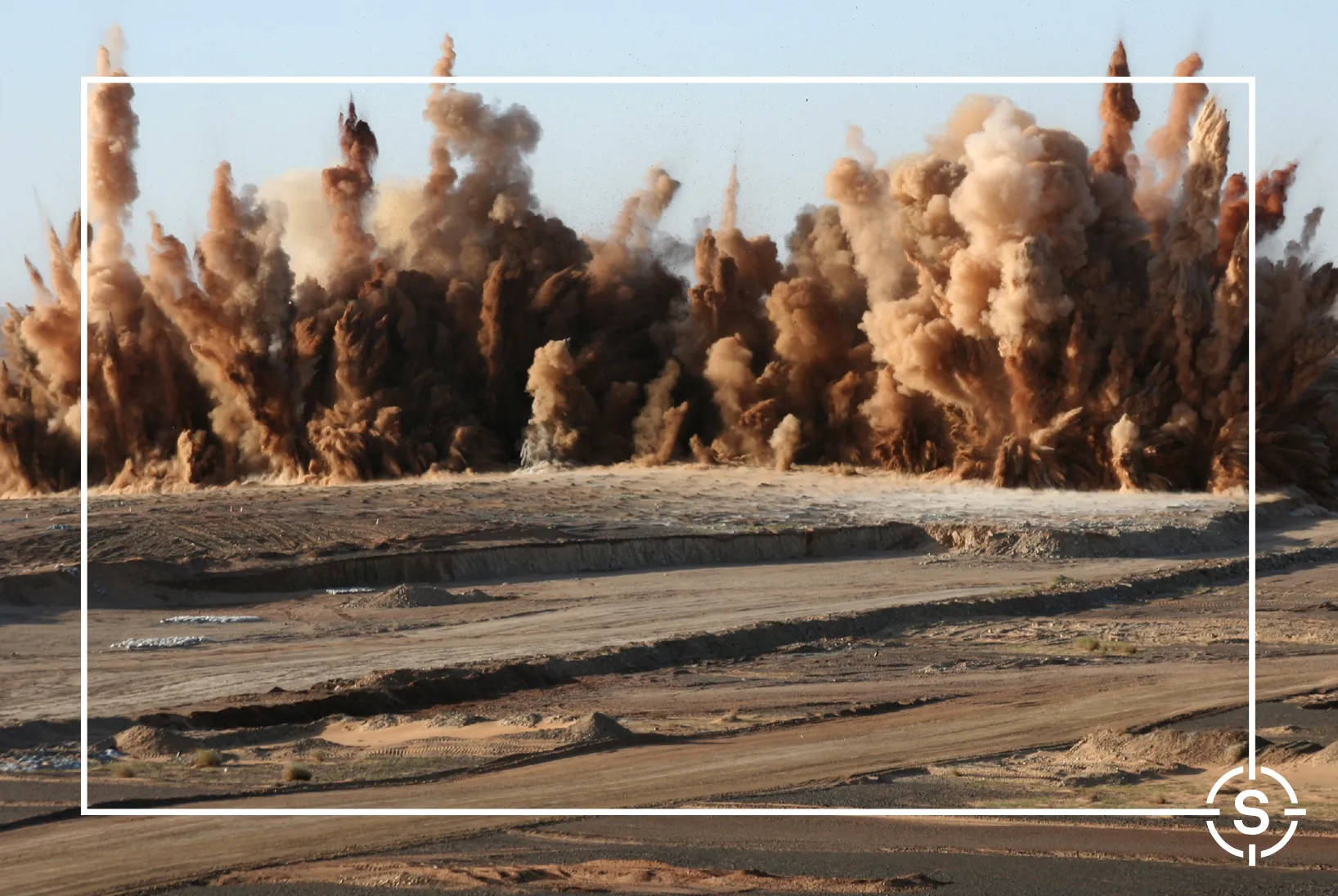
Noise Management
This chapter provides guidance in relation to noise, and is primarily based on New Zealand legislation and guidance issued by WorkSafe NZ.
Who needs to read this?
All workers who undertake tasks where they are, or could be, exposed to excessive noise should read and understand the section on ‘minimum responsibilities’.
Roles that have specific responsibilities, or influence, over workers who are, or could be, exposed to excessive noise should read the section on ‘planning and guidance considerations and responsibilities’ – this includes producers, directors, production managers, line producers, heads of departments, assistant directors and health and safety officers.
Definitions
Audiometry6 means the measurement of the hearing threshold level of a person by means of a bilateral pure tone air conduction threshold test.
Excessive noise, for the purpose of this document, is noise that is at or above the following levels—
~(1) eight-hour equivalent continuous A-weighted sound pressure level, LAeq,8h of 85 dB(A); and
~(2) a peak sound pressure level, L-peak, of 140 dB —whether or not the individual is wearing a personal hearing protector; or
~(3) if the threshold is lower, the levels defined in the Health and Safety at Work 2016 Regulations. Note: these Regulations are due to be updated and the noise threshold may be lowered.
Hearing protector means a device or pair of devices that have been tested to an appropriate national or international standard and classified (or graded) by a suitably equipped and independently audited laboratory with full trace ability to National Standards. Such a device is worn by a person or inserted in the ears of a person to protect that person from exposure to noise.
Impulse noise means noise consisting of a single pressure peak, or a sequence of such peaks, or a single burst with multiple pressure peaks, or a sequence of such bursts.
Noise means any sound which is present in the place of work whether it is wanted or not wanted, and includes sound energy of any frequency, whether or not capable of being perceived by the unaided human ear.
Noise induced hearing loss is hearing loss that occurs due to excessive noise exposure; it can be identified by deterioration in hearing, a loss excessive for age, or a noise pattern discovered during audiometric testing.
What we need to know about noise
Excessive noise, both short but extremely loud noise (impulse noise) and prolonged continuous noise, can cause noise induced hearing loss.
Exposure to excessive noise can also trigger workplace stress, causing anxiety or psychological harm, as well as headaches, fatigue and decreased concentration, increasing the risk of accidents. Excessive noise and noisy processes are also often associated with vibrations, which can impact a worker's health.
Excessive noise exposure can also prevent people from hearing alarms or warning signals, limiting awareness and potentially leading to avoidable accidents.
How can I tell what excessive noise is?
Daily exposure to noise above 85 decibels (dBA) will damage hearing; however, 85dBA might not mean a lot to most people.
Excessive noise, or a noise hazard, probably exists if:
- you have difficulty understanding what's being said one metre away;
- you have ringing in your ears (tinnitus) after exposure to the noise;
- or your hearing seems muffled after leaving a noisy area.
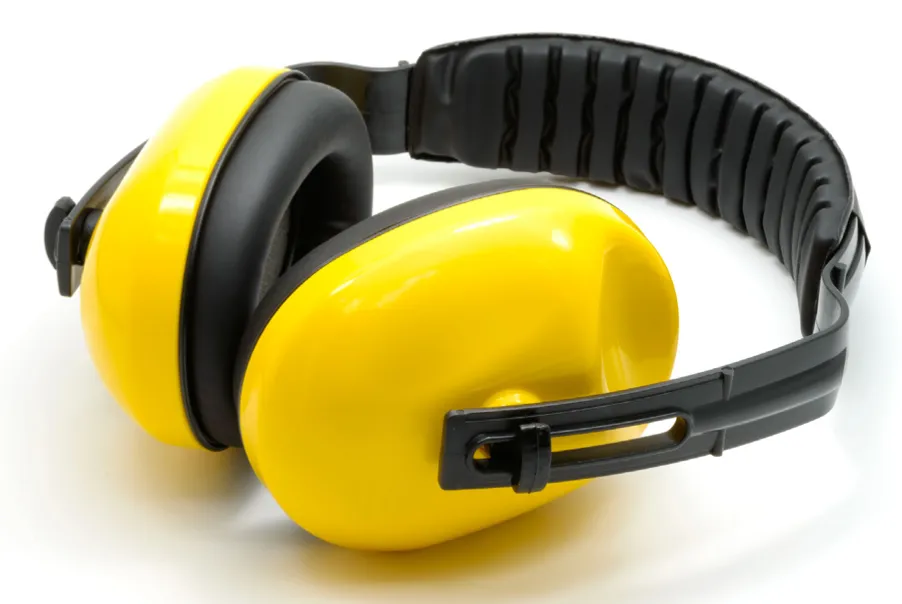
Example of noise levels are outlined below:
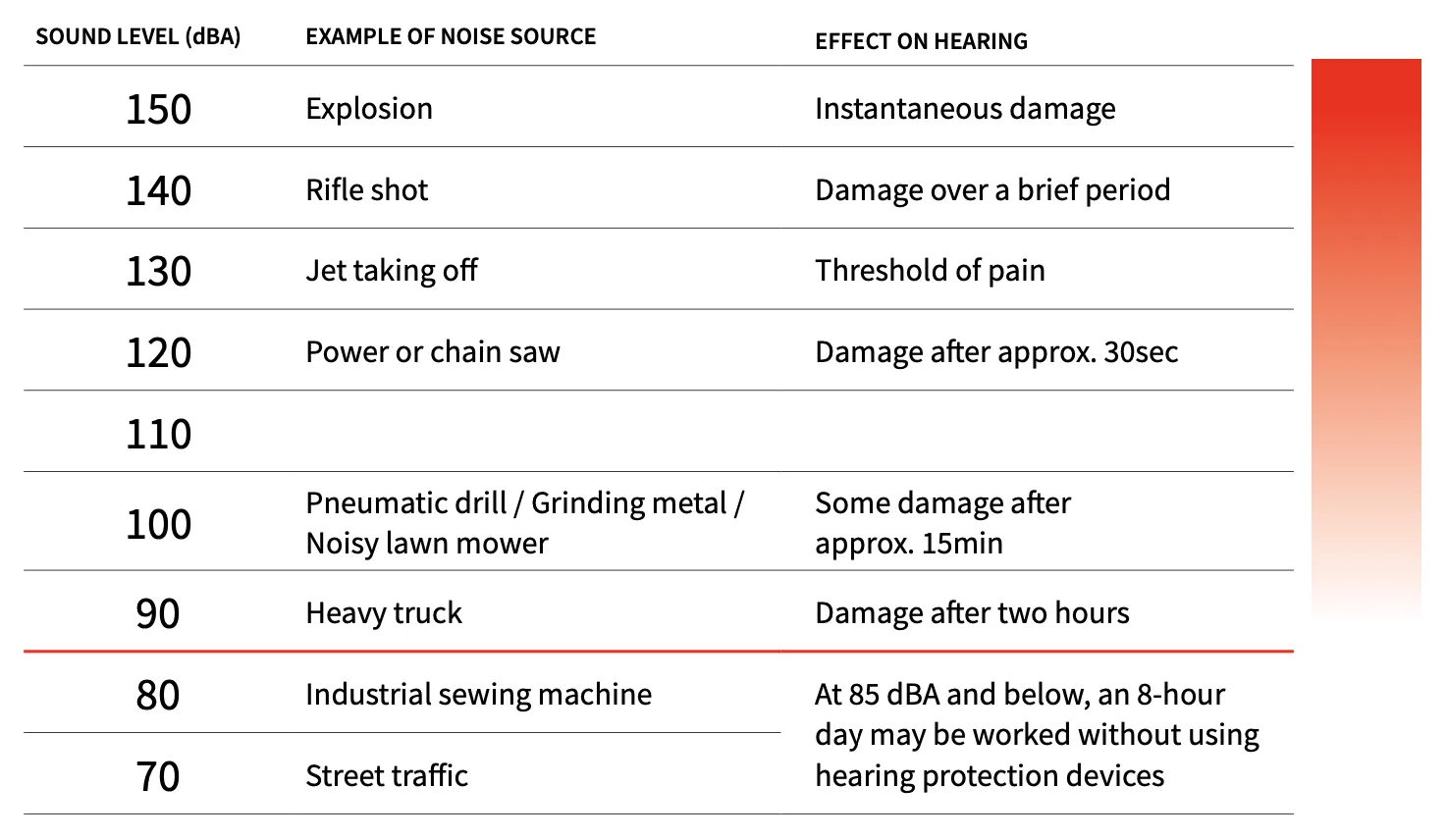
Minimum responsibilities – everyone!
Everyone who undertakes tasks where they are, or could be, exposed to excessive noise should read and understand this section, as well as the section above on ‘what we need to know about noise’.
Anyone who is responsible for, or has influence over, workers who are, or could be, exposed to excessive noise should also read and understand the following section on ‘planning and guidance considerations and responsibilities’.
All workers should:
- understand the risks associated with working in noisy environments;
- follow all procedures and controls put in place to keep themselves and others safe when working in noisy environments;
- use personal hearing protective devices when required, and ensure they are worn correctly;
- read the section later in this document on personal hearing protective devices;
- understand the noisy activities outside of work that can negatively impact on their hearing, such as listening to loud music or undertaking noisy tasks like mowing the lawn or using power tools at home; and
- advise their supervisor or the health and safety officer if they are concerned about the level of noise they, or others, are exposed to.
* See the Hearing Protection Guidebook from Worksafe
Planning and guidance considerations and responsibilities
Anyone who is responsible for, or has influence over, workers who are, or could be, exposed to excessive noise should also read and understand this section, as well as the minimum responsibilities for everyone.
This includes the production company, producers, directors, line producers, heads of departments, assistant directors and health and safety officers, who must consult, cooperate and coordinate with other PBCUs whose work may create, or be impacted by, excessive noise.
Everyone who is responsible for, or has influence over, an activity or task which creates, or is impacted by, excessive noise should:
- consider the risks associated with noise when planning and allocating tasks; and
- manage the risks associated with excessive noise, either eliminating or minimising them.
Identifying excessive noise
Everyone who is responsible for an activity or task in relation to the production should consider the risks associated with excessive noise.
Preliminary Noise Assessment
A preliminary noise assessment is often called a walkthrough survey. It is a screening tool, which will help identify probable or possible excessive noise and should highlight which tasks, processes or areas in the workplace require a detailed noise assessment.
Anyone can undertake a preliminary noise assessment – see appendix A below for an example of a checklist.
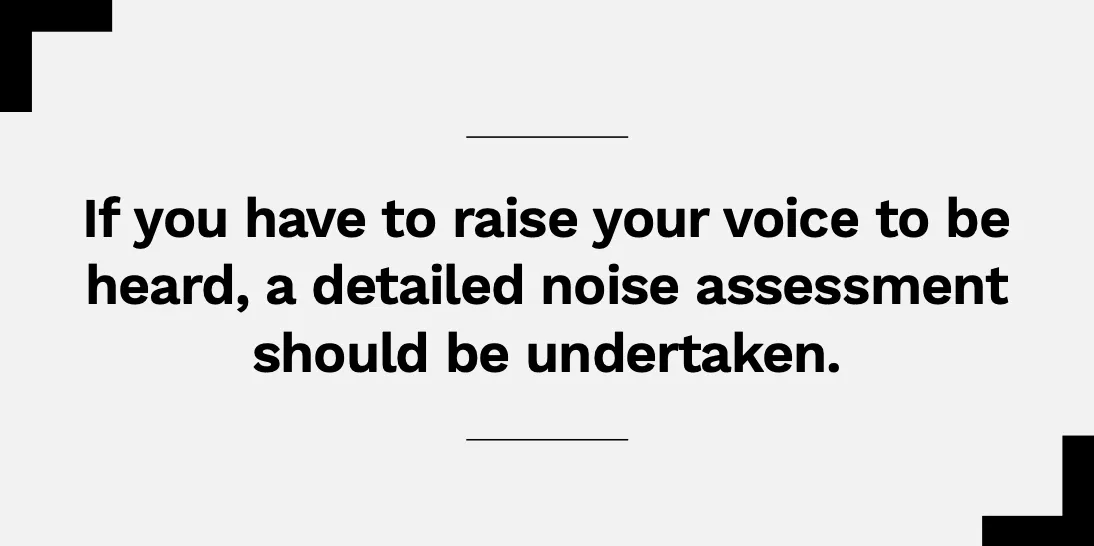
Detailed Noise Assessment
A detailed noise assessment will determine if the workplace contains noise that exceeds the exposure limits, and is required when:
- complex noise sources are present;
- if there is doubt over the noise levels – raised by the PCBU or workers; or
- if a preliminary noise assessment raises doubt over the noise levels.
A detailed noise assessment will:
- quantify the amount of noise workers are exposed to;
- help identify the noise source;
- assist in developing control solutions; and
- determine if hearing protection devices are required.
A detailed noise assessment must be undertaken by a competent person.
Further information can be found in Management of noise in the workplace - Approved Code of Practice (ACOP).
Hearing conservation programme
As soon as a PCBU is aware that workers are being exposed to noise that exceeds exposure limits, they must put in place a hearing conservation programme, which includes determining if hearing protection devices and hearing protection areas are required.
For more information about what needs to be considered as part of a hearing conservation programme refer to the Noise in the workplace – Approved Code of Practice (ACOP).
Hearing Protection Areas
Hearing protection areas are workspaces that have, or may have, excessive noise, where hearing protection devices must be worn, even if a worker or visitor is only in the area for a short amount of time.
These areas must be identified, with the areas and machinery concerned clearly labelled. The PCBU may wish to put up signs.
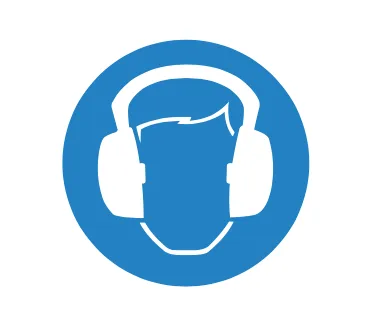
If signs are not practicable, the PBCU must work with workers to come up with other ways of informing both workers and visitors on set that they must wear hearing protection devices. This could include:
- warning notices;
- instructions on call sheets or during inductions; or
- specific supervision in areas with excessive noise.
The requirements for hearing protector areas are detailed in clause 10 Hearing protector areas of AS/NZ 1269.3
or you can read about them in part 6.4 (pg 23-24) of Approved Code of Practice (ACOP).
Managing the risk
Elimination is the most effective control method; you do this by completely removing or avoiding the possibility that someone will be exposed to excessive noise – 85dBA a day or a peak sound pressure level, Lpeak, of 140 dB.
If complete elimination is not reasonably practicable, you must consider ways to minimise the risk so workers are not exposed to excessive noise.
There are two primary ways to minimise, or control, excessive noise – at the source or by isolating either the source or the worker.
You can control the source of the noise by:
- purchasing equipment with the lowest noise rating;
- ensuring that, where reasonably practicable, machinery is installed with vibration isolators to reduce noise; or
- ensuring that equipment is properly maintained and operated.
Controlling noise at the source is best achieved at the planning stage; you can do this by:
- increasing the distance between the noise source and the exposed person;
- placing barriers between the noise source and the exposed person; or
- decreasing the time the at-risk person is exposed to the noise.
If you cannot reduce noise exposure to less than 85dBA a day, the final option is to minimise the risk using suitable hearing protection.
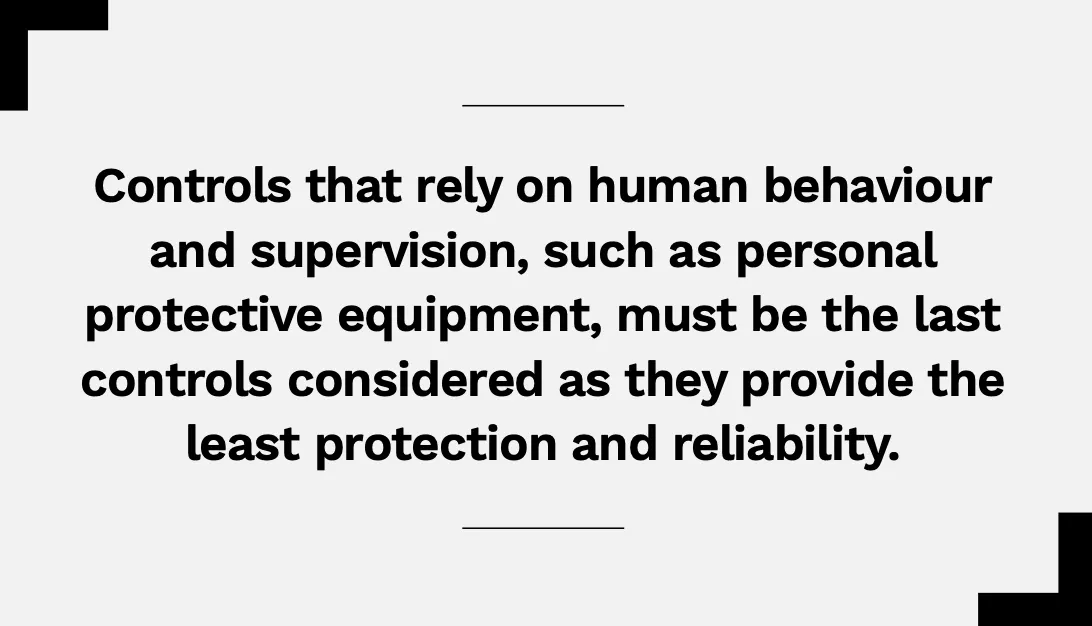
Hearing protection devices
If you cannot reduce the noise to a safe level for workers, you must ensure workers have suitable hearing protection devices (HPDs); the worker is responsible for using them appropriately.
Areas where HPDs must be worn must be designated hearing protection areas and, where practicable, signposted indicating that HPDs must be used.
The main types of HPDs are ear muffs and earplugs; either type can provide effective protection provided it makes an airtight seal in (plugs) or around (muffs) your ear.
The head of department, or equivalent supervisor:
- must ensure all HPDs are manufactured to a recognised Standard and must be the correct grade for the noise level encountered;
- should let the worker choose what HPD to use, providing it gives adequate protection;
- should ensure HPDs are clean and in a good state of repair.
It is important that hearing protectors fit correctly.
For more information about choosing and maintaining HPDs refer to the Noise in the workplace - Approved Code of Practice (ACOP).
See also - Hearing Protection (Worksafe booklet)
Training and Education
All workers should be trained in the selection, fitting, use, care and maintenance of HPDs.
Health and safety inductions should include an explanation about the risk that removing HPDs can have to an individual’s hearing.
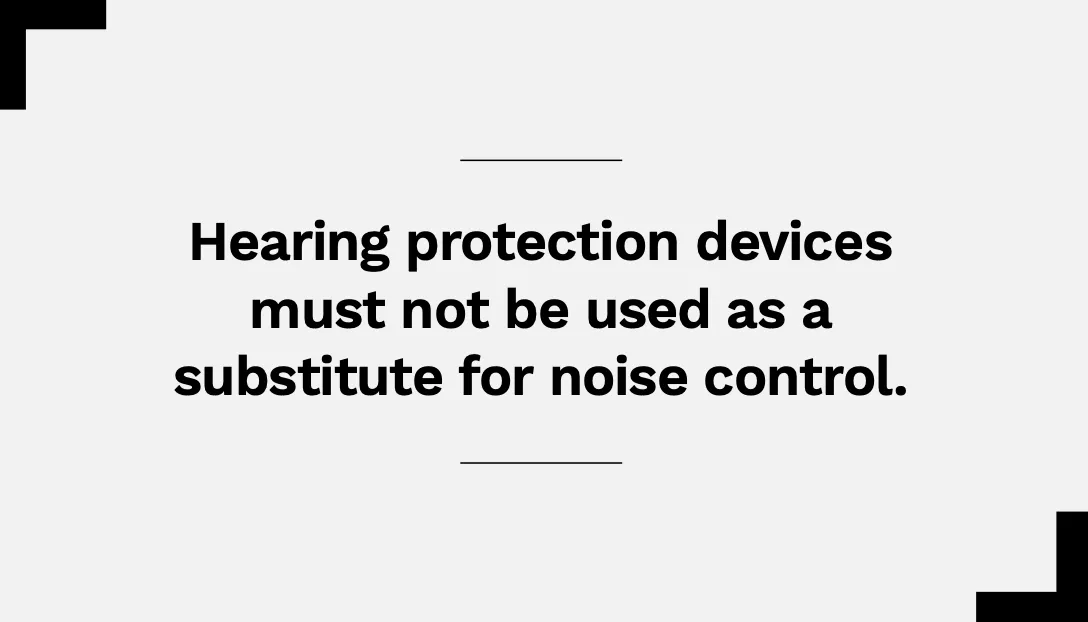
Monitoring the risk
During the production, workers’ exposure to noise should be monitored to ensure they are not being exposed to excessive noise.
If noise does exceed exposure limits, the PCBU must put in place a hearing conservation programme and may consider carrying out audiometric testing.
For more information refer to the Noise in the workplace - Approved Code of Practice (ACOP).
Funders
Funders should:
- be assured, through the provision of the production’s health and safety plan, that the funding provided is adequate to provide HPDs.
Production Company
In pre-production, production companies (likely to have primary responsibility over health and safety on the production) should:
- ensure workers’ exposure to noise to monitored; and
- ensure a hearing conservation programme is put in place.
Producer / Line Producer / Production Manager
As Producers and Production Managers have oversight across the production, they should:
- consider the potential for exposure to excessive noise when planning and allocating tasks;
- ensure the potential for exposure to excessive noise is either eliminated or minimised;
- ensure workers’ exposure to noise to monitored;
- ensure a hearing conservation programme is put in place;
- ensure information about hearing protection areas and the requirement for HPDs is included on daily call sheets.
Director
Directors should:
- consider the potential for exposure to excessive noise when planning and allocating tasks; and
- ensure the potential for exposure to excessive noise is either eliminated or minimised.
Heads of Department
Heads of Departments should:
- consider the potential for exposure to excessive noise when planning and allocating tasks;
- ensure the potential for exposure to excessive noise is either eliminated or minimised;
- ensure information about hearing protection areas and the requirement for HPDs is discussed at team meetings;
- let the worker choose what HPD to use, providing it gives adequate protection; and
- ensure HPDs are clean and in a good state of repair.
They must also ensure all HPDs are manufactured to a recognised Standard and are the correct grade for the noise level encountered. See the Approved Code of Practice.
Assistant Director/s
The Assistant Director/s should:
- ensure risks associated with excessive noise are discussed with all cast and crew during health and safety inductions and / or as required if circumstances on the set change; and
- report incidents of noise-related injury – notifiable event.
Health and Safety Officer
The Health and Safety Officer should:
- ensure risks associated with excessive noise are discussed with all cast and crew during health and safety inductions and / or as required if circumstances on the set change;
- explain the risk that removing HPDs can have to an individual’s hearing; and
- report incidents of noise related injury – notifiable event.
References
- Health and Safety in Employment Regulations 1995
- Occupational Health and Safety Service, Department of Labour (now WorkSafe New Zealand); A Message to Employers on Preventing Hearing Loss
- Occupational Health and Safety Service, Department of Labour (now WorkSafe New Zealand); Management of noise in the workplace – Approved Code of Practice (ACOP)
- Occupational Health and Safety Service, Department of Labour (now WorkSafe New Zealand); Management of Noise at Work - Control Guide (1996)
- ACC - Occupational Noise Levels
Appendix 1: preliminary noise assessment checklist
